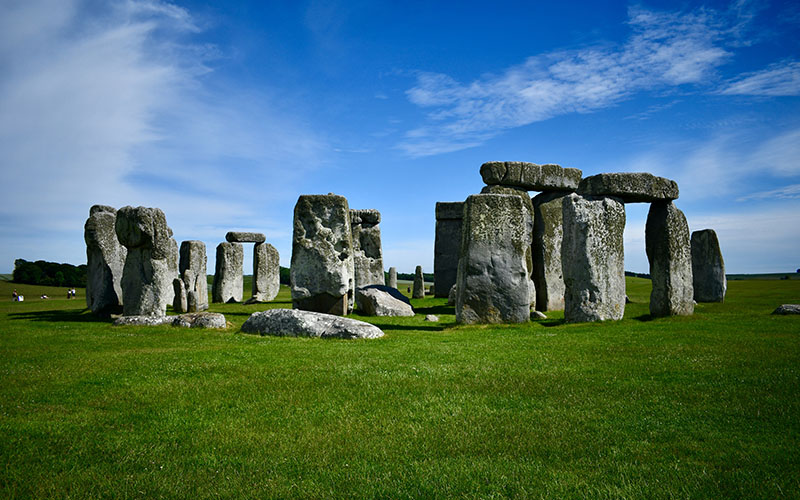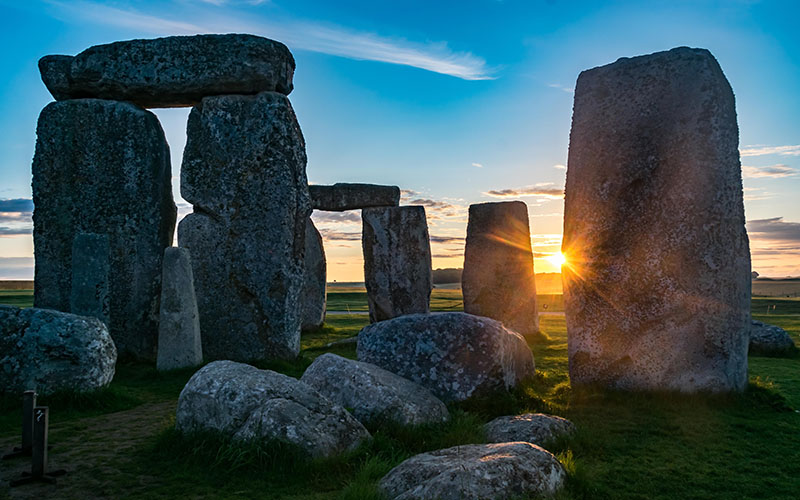When you are off on a European holiday, you are mostly attracted by the architectural marvels. Not only history buffs but also avid tourists enjoy visiting magnificent European monuments and landmarks. Architectural attractions are typically grand in scale and capture the complexities of art and craftsmanship. However, if you have a UK visa and are visiting England, you come across an architectural attraction that leaves you wondering if it is nature’s wonder. Located in Salisbury Plain, Wiltshire-England, Stonehenge has over the years enticed tourists with its raw appearance and mystic nature and is considered one of the most mysterious places to visit in the world. Often one wonders what this attraction is all about. Here’s putting most of your doubts to rest with 10 fascinating facts about Stonehenge.
Stonehenge in a nutshell

Stonehenge is perhaps the oldest pre-historic structure in Europe and has gained wide attention as an ancient relic that does not quite explain its reason for existence. Even years after its discovery, Stonehenge continues to be shrouded in mystery, with legends and scientific theories still being deciphered. This strange circular structure consists of horizontal and vertical rectangular rock slabs. Since 2000 BC, various groups have lifted and positioned the standing slabs over time. It has survived the changes and challenges of time and continues to stand today.
For years, this enigmatic relic has drawn millions of visitors to its location, to marvel at its ancient mystery, making it one of the most popular tourist attractions in UK. Anyone with a UK tourist visa should definitely include this attraction in their trip to England. Except, during the Christmas period, Stonehenge is open for visitors every day. However, booking your admission ticket beforehand is the only way to ensure access to this attraction at the time and day you choose.
Fascinating facts about Stonehenge

- Stonehenge is one of Europe’s oldest tourist attractions. It is a prehistoric monument with a history dating back to 2000 BC. One of the most interesting facts about Stonehenge is that it is 500 years older than the Egyptian Pyramids. Builders have constructed Stonehenge in three stages. And, over the years, people have rebuilt and rearranged it. There are no written records documenting the construction of this attraction, other than the intuition about when it began. Writings from the 12th century and a paintings from the 16th century are the earliest records of this attraction.
- The stone monument is the world’s only surviving lintelled stone circle. Many people speculate about who built Stonehenge. Researchers discovered evidence that the earliest builders were of Aegean descent.
- The construction includes Bluestone, Sarsen, and Welsh Sandstone, all transported from distant locations across the United Kingdom. The stone weighs between 25 and 30 tonnes on average. Scholars continue to debate how people in the Neolithic era transported such heavy monoliths without advanced technology or engineering innovations.
- Another fascinating fact about Stonehenge is that someone once sold it at an auction! Since its discovery in the 16th century, Stonehenge has changed ownership several times. Cecil Chubb, a local businessman, purchased it at an auction in 1961 and donated it to the UK government for restoration and care as a national historic monument.
- No one has been able to pinpoint a specific reason for the construction of Stonehenge. Based on human remains discovered at Aubrey Holes, archaeologists believe Neolithic people built Stonehenge as a burial site. Data suggests that people cremated the bodies before transporting them to Stonehenge, with many brought from distant locations. Experts also consider the stone formation to have astronomical significance, likely used to track the position of the sun and moon. Theories suggest that Stonehenge aligns with astronomical events such as eclipses and equinoxes.
- Surrounded by legends, Stonehenge remains England’s most studied relic. The structure is associated with many legends and is possibly England’s most studied relic. Many historians and archaeologists are curious about the origin and purpose behind the construction of this attraction. Charles Darwin studied the site in the late 1800s and mentioned it in his books.
- UNESCO has designated Stonehenge as a World Heritage Site. The entire site encompasses 2600 hectares, which is nearly seven times the size of New York’s Central Park. The site includes more than just the stone circle; it also encompasses the surrounding landscape and archaeological sites.
- Experts believe Stonehenge’s construction remains incomplete. Builders spent years constructing the initial structure visible today at Salisbury Plain, yet they never fully completed it. Without written records explaining its purpose or construction, the final intended design remains unknown.
- Some giant boulders feature carvings on their surfaces, believed to date back to the Bronze Age. Stonehenge stands out for its alignment with astronomical occurrences and prehistoric beginnings, while the London Eye facts highlight its record-breaking height.
- Experts believe Stonehenge functioned as an ancient calendar. The sun rises over the Heel Stone at Stonehenge on June 21, the longest day of the year. This phenomenon is known as the summer solstice. Likewise, on the shortest day of the year, the sun always sets over the Heel Stone. Many theories suggest that the positioning of the stones correlates with months, seasons, and years.
